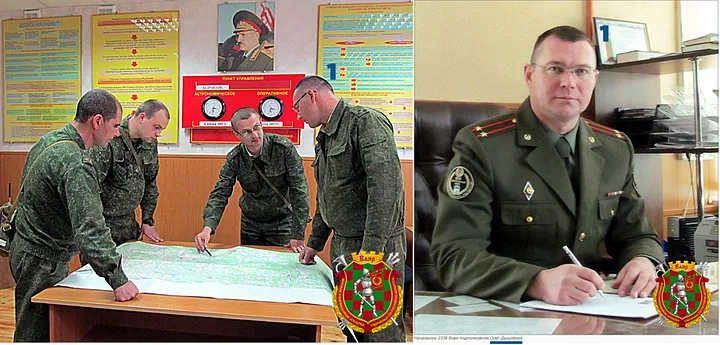#ZapadWatch: Broadcast from Belarus
Russia and Belarus continue preparations for the Zapad 2017 exercise
#ZapadWatch: Broadcast from Belarus
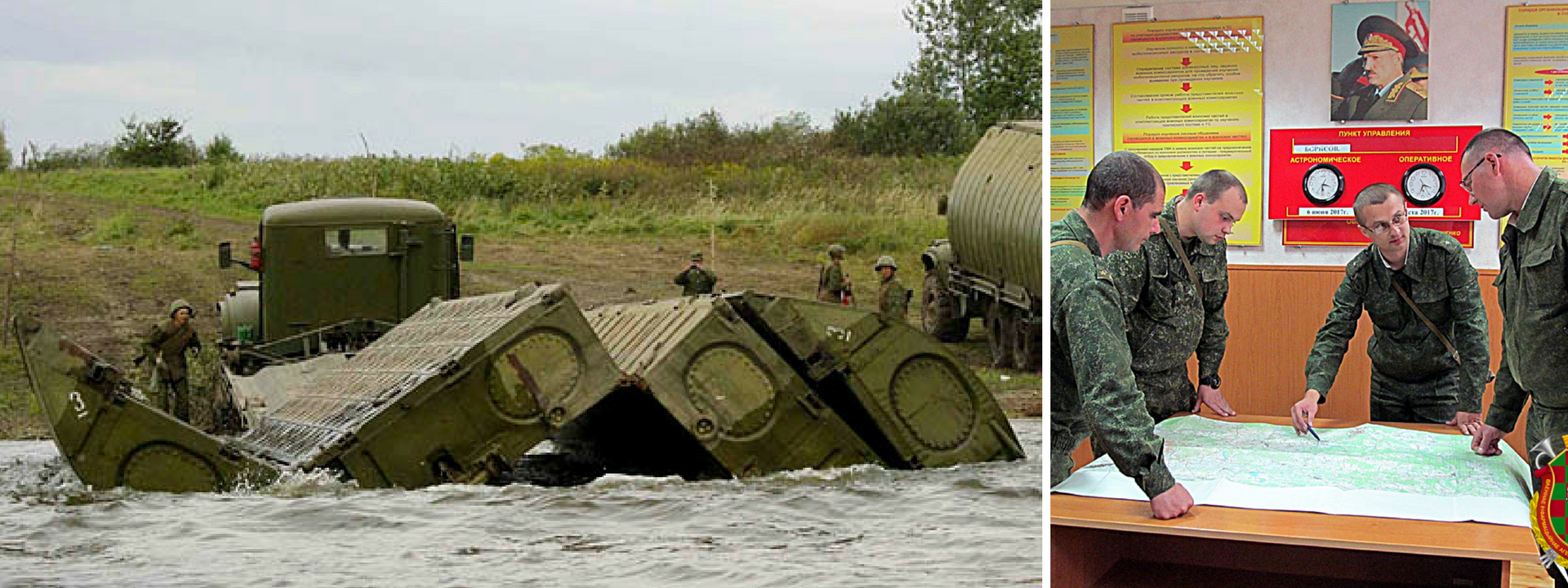
Russia and Belarus are scheduled to hold Zapad 2017, a large-scale joint military exercise September 14–20. In June, the two countries conducted a number of warm-up exercises explicitly identified as part of the preparation for Zapad.
Exact details of the scenario were not announced, but in March, President Alexander Lukashenko of Belarus gave a general view:
The topic of the forthcoming exercise will be the preparation and use of groupings of troops and forces to ensure military security in the interests of both states.
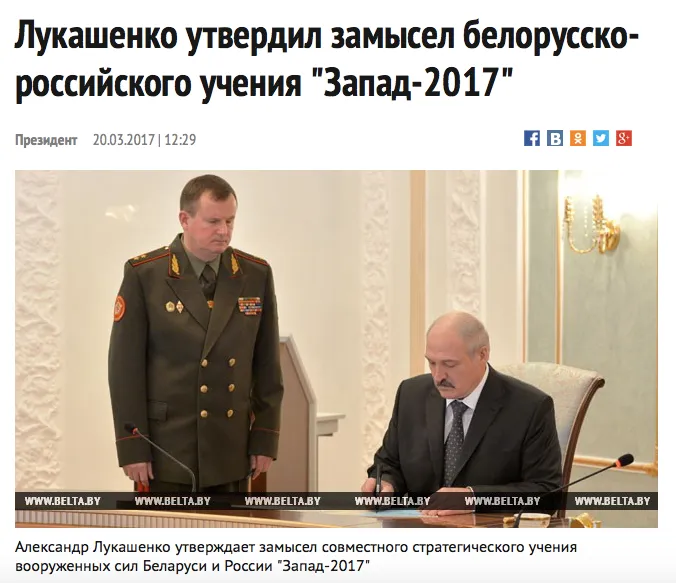
The article from Belta.by also reported on the timeline for the exercise.
The exercise will be carried out in two stages. In addition to practicing the use of groups of troops, participants will fulfill the tasks of territorial defense, strengthening the protection of the state border, restoring the combat efficiency of troops and all-round support.
On June 21, Russian Defense Minister Sergei Shoigu said that the exercise will involve “significantly fewer” troops and materials than “similar exercises by NATO and European countries.”
Joint electronic warfare exercise
During a broadcast called “Arsenal” on June 4, Belarusian Army TV aired a story about an exercise involving Belarusian and Russian electronic warfare units.
The broadcast confirmed that Belarusian and Russian forces carried out the exercise in preparation for Zapad:
A joint exercise of Belarusian and Russian electronic warfare units was completed at the Domanovo training ground. Over 1,500 people and more than 200 pieces of equipment took the field. The training of EW [electronic warfare] specialists was the first in a series of exercises preparing for the large-scale training of the regional grouping of forces [for] Zapad 2017.
Another source that mentioned the exercise was the Belarusian Army Newspaper. An article published on June 15 reads:
Just recently, soldiers have returned from the field, where issues of the deployment and sustainable functioning of all types of communication were practiced, with the use of new and modernized means and systems of information transmission. During the special tactical exercises, the coordination of field communication centers was successfully completed. The planned event [was] an important stage of practical preparation for the forthcoming Zapad 2017.
Neither the Belarusian nor the Russian Ministry of Defense mentioned the particular exercise. However, on June 22 the Russian Ministry of Defense reported on a communication exercise carried out in preparation for Zapad.
Again, neither source mentioned the exact date of the exercise. Since the previous episode of “Arsenal” aired on May 28, the approximate timeframe when the exercise happened is between May 28 and June 4.
The Domanovo training ground is located in Western Belarus, approximately 170 kilometers from Grodno and Minsk, according to Wikimapia.
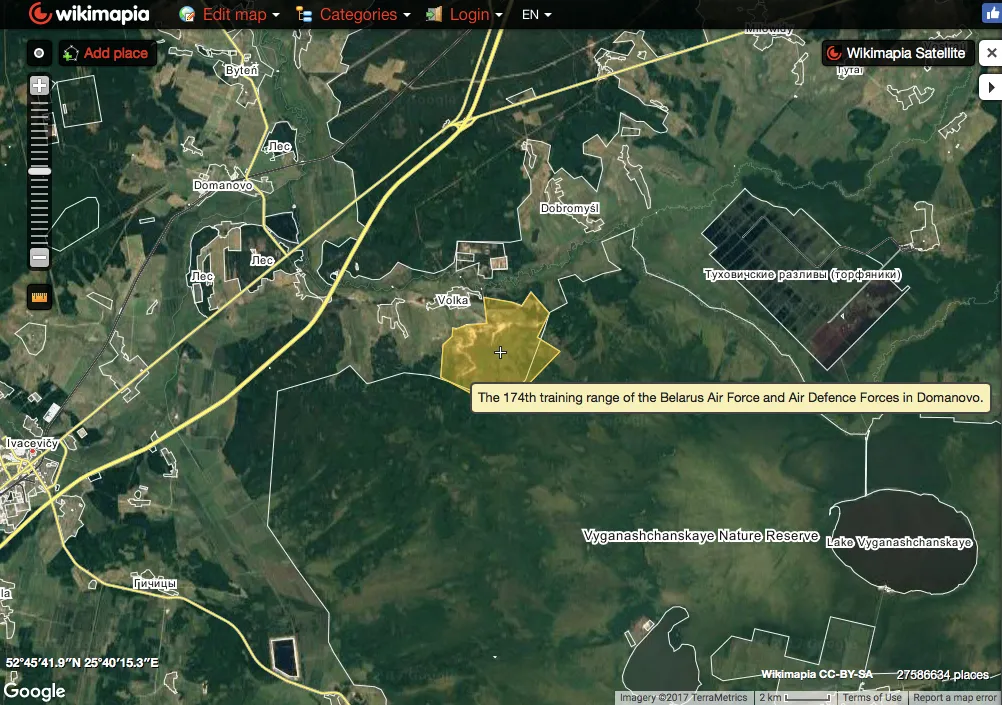
The broadcast on June 4 mentioned that Belarusian and Russian electronic warfare units were operating from their permanent locations.
The video also mentioned military personnel involved in the exercise. One of them is Igor Danilchik, the head of the Electronic Warfare Department of the General Staff of the Armed Forces of the Republic of Belarus. Another one is Andrei Bykov, the head of the Integrated Technical Control Department. Neither has an identifiable social media account.

Logistical support
On June 9, the official newspaper of the Belarusian Ministry of Defense published an article about an exercise involving the 2336th storage base. It said the command post carried out the exercise in preparation for Zapad.
The article reads:
Over two days, issues of the practical use of the base’s units for the comprehensive provision of troops with material resources, obtaining and distributing their supplies under various tactical conditions, were worked out at their point of permanent deployment.
The base is located in the city of Borisov, about 75 kilometers from Minsk city. As reported by the official newspaper in January, 2016, the base houses over two thousand containers of material located in dozens of storage facilities on more than 17 hectares.
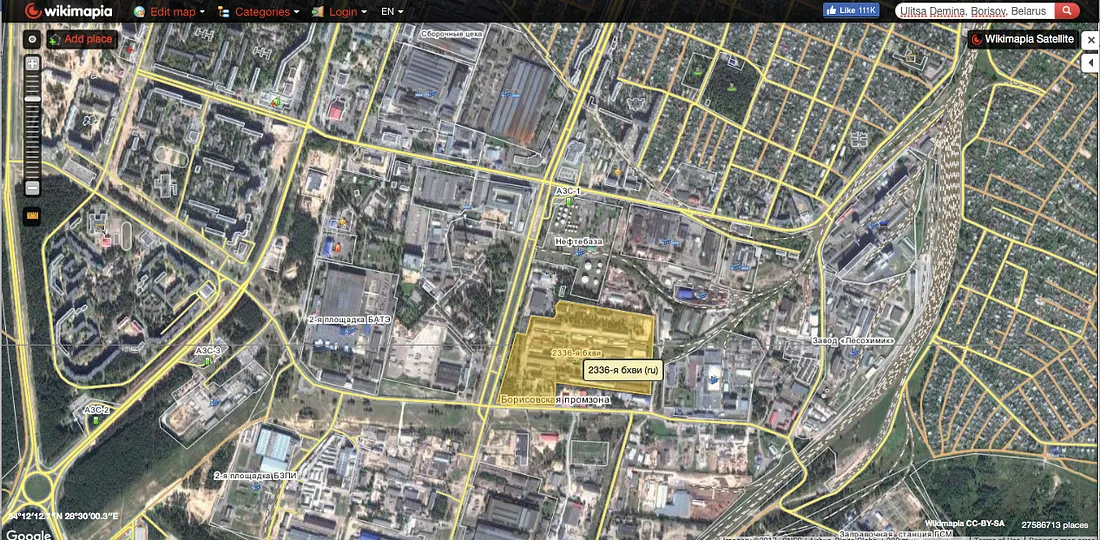
The commander of the storage base is Oleg Dishlenok. His profile on the Russian social network Odnoklassniki is visible only to his friends.

The deputy commander of the base is Andrey Lobanenko. He is visible both in an image added to the article about preparations for Zapad and in an image published in the article in January 2016. His profile on the Russian social network VKontakte (ВКонтакте) is public, but does not share information about the base.
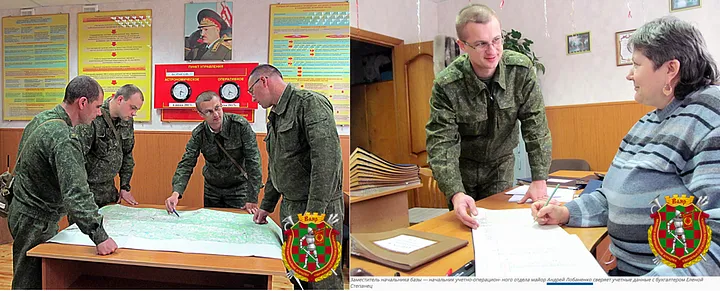

Joint bridging exercise
On June 13, the Belarusian Ministry of Defense reported on a special tactical exercise involving engineering units of the Russian and the Belarusian armed forces. A pontoon-bridge battalion from the Belarusian 188th Guards Engineering Brigade and pontoon divisions of the Russian Armed Forces carried out the exercise from June 13-June 15.
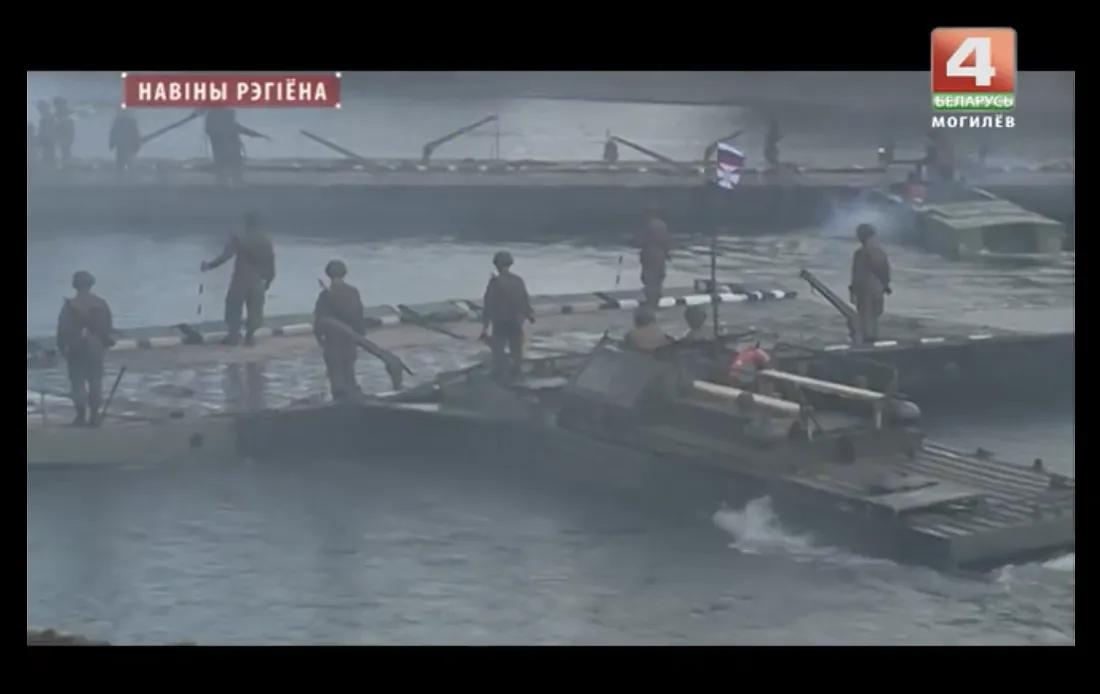
The Russian Ministry of Defense reported on the exercise on June 16 without mentioning the date. However, a video posted on June 24 claimed that some preparatory actions for the exercise had been carried out as early as May 23.
In a broadcast on June 25, Belarusian army channel Voen-TV mentioned that the exercise was carried out in preparation for Zapad.
The anchor said:
A joint Belarusian-Russian exercise of engineering units was held near Mogilev. The training is one of the stages of preparation for the strategic exercise Zapad 2017.
Russian army channel Zvezda TV did not cover the exercise at all, while a report by the Russian Ministry of Defense did not mention that it was carried out in preparation for Zapad.
As mentioned in the sources above, the exercise was held near Mogilev on the Dnieper River. A story by a local TV channel mentioned that it happened in the town of Dashkovka.
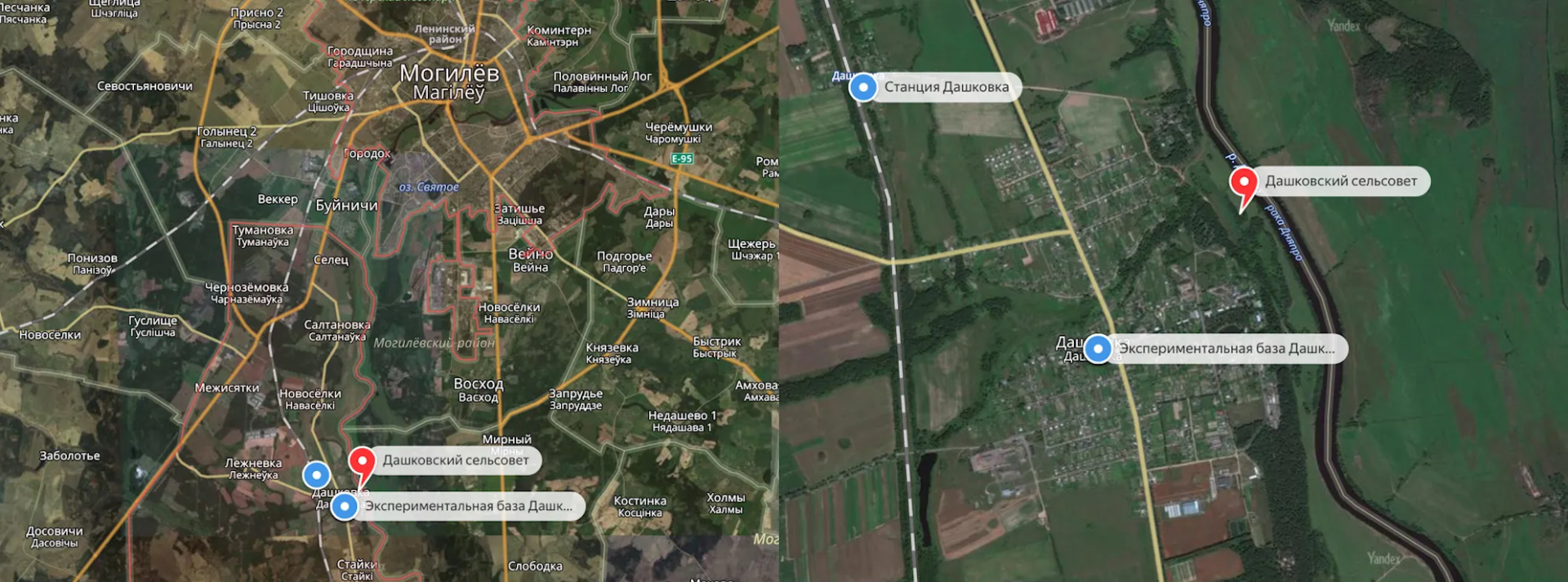
The video shows events from the exercise. A more detailed scenario was explained in an article published in the official Belarusian army newspaper.
The article reads:
According to the plan of the exercise, it was necessary to build a floating bridge and ensure the movement of the mechanized column through a water barrier. At the same time, the actions of military engineers were complicated by the activities of an illegal armed formation (IAF).
The main task of the Belarusian forces was to build a floating bridge. This was done under the cover of white smoke generated by TDA-2K smoke machines. The troops built three bridges — the main one, a backup bridge, and a fake bridge.
The author of the article, Senior Lieutenant Jan Horbanyuk, explained:
This is a tactical move, allowing us to deceive the enemy and thereby gain the necessary time for the transfer of equipment and personnel, in the event of an air raid or reconnaissance of the terrain by the enemy.
Then the exercise simulated an attack on the floating bridge. As one of the links of the bridge sustained damage, the Russians came to help:
And then Russian servicemen came to the rescue. They received the signal and immediately brought to the right place a spare link with the help of boats. They worked quickly and efficiently: a few minutes later, the bridge again stood in its place. The mechanized column in its entirety overcame the water obstacle unhindered — the task was accomplished successfully.
An article and a video by Mogilev TV featured a few people involved in the exercise. One of them is reserve Guards Sergeant Maxim Fesko.

On his profile on VKontakte, he states that he has been involved with the Belarusian military in Mogilev since 2011. Fesko posted the latest content on his public profile on April 16.
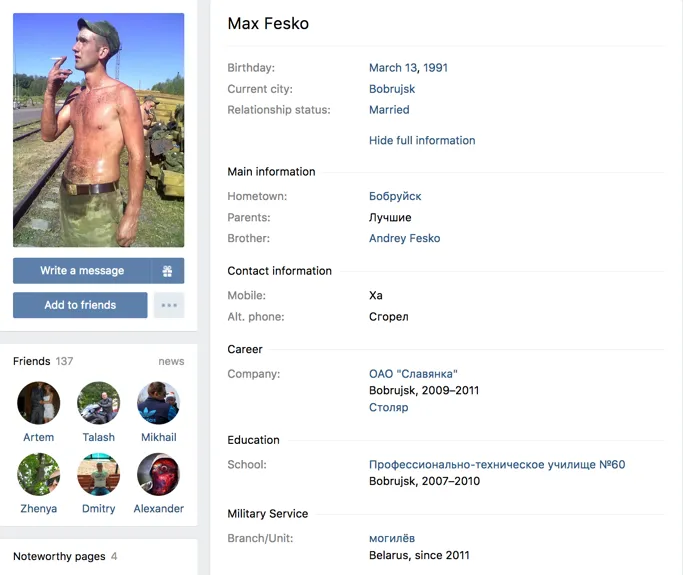
The video lists more high-ranking officials, but their social media profiles could not be found. One of them is Chief of the General Staff of the Armed Forces of the Republic of Belarus — First Deputy Minister of Defense of the Republic of Belarus Oleg Belokonev. Another is Sergei Chudovskikh, the deputy chief of the Engineer Troops of the Western Military District (Russia). And finally, Mihail Nagamai, the deputy chief of the Engineer Troops of 1st Guards Tank Army.

Conclusion
So far, the exercises carried out in preparation for Zapad have been small-scale and tactical. The Belarusian Ministry of Defense and armed forces have been significantly more transparent about the preparations than their Russian counterparts.
An interesting side note is the reference in the article about the river-crossing exercise to “illegal armed formations.” The same purported adversary featured in a Belarusian air exercise reported by Voen-TV on June 22 and in exercise Slavic Brotherhood, which featured Russian, Belarusian, and Serbian forces, and which occurred in early June. It remains to be seen whether the Zapad scenario will reflect this interest or focus on higher-intensity warfare.
@DFRLab will continue to monitor the situation through the summer, as preparations for Zapad 2017 intensify. If you or any other #DigitalSherlocks see anything on the ground or online related to the exercises, join the conversation using #ZapadWatch.

